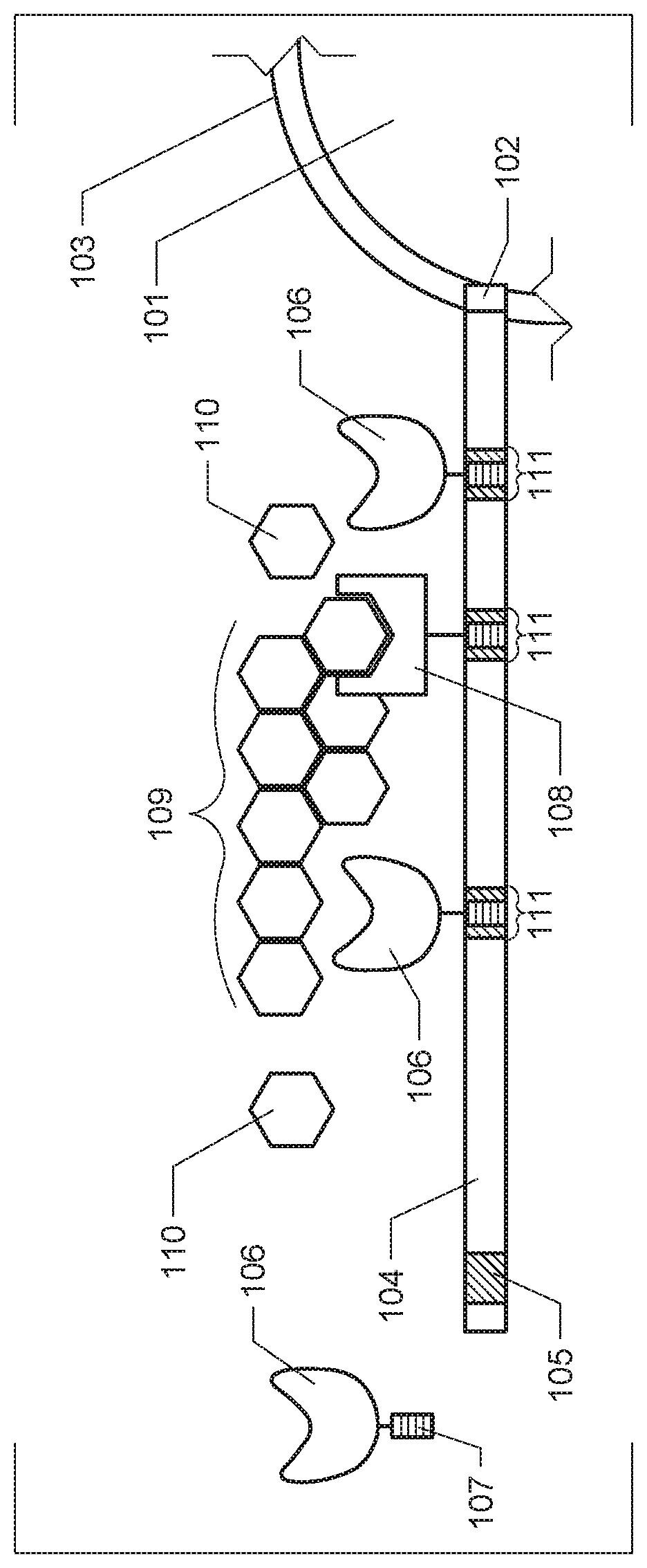Proteins from anaerobic fungi and uses thereof
a technology of anaerobic fungi and anaerobic bacteria, which is applied in the field of anaerobic fungi-derived proteins, can solve the problems of high energy consumption of crude biomass bioprocessing, and inability to meet the needs of a wide range of applications
- Summary
- Abstract
- Description
- Claims
- Application Information
AI Technical Summary
Benefits of technology
Problems solved by technology
Method used
Image
Examples
example 1
Identification
[0091]Fresh fecal material was collected from farm animals. Specimens were isolated from 5×10-fold serial dilutions of fecal matter in anaerobic buffer medium. Each dilution was then supplemented with 30 μg / ml chloramphenicol and grown in anaerobic medium containing milled reed canary grass at 39° C. to enrich for gut fungi. Enrichment cultures that were positive for fungal, but not bacterial or protist, growth after 5-10 days as determined by the generation of fermentation gases without an increase in culture turbidity were further subcultured. To generate unique fungal isolates, actively growing enrichment cultures were diluted up to 50-fold in serial dilutions with each dilution being subcultured for ˜4 days. This isolation procedure was repeated five times until a uniform fungal morphology was observed from each specimen and a unique ITS sequence of the isolate was obtained. Subsequent phylogenetic analysis of this ITS sequence confirmed the presence of a single no...
example 2
ation and Characterization of Scaffoldin Proteins
[0093]Genomic analysis of 5 unique anaerobic fungi revealed the presence of 1600 total dockerin domain proteins (DDPs) across genera with diverse functionality, primarily related to plant carbohydrate binding and biomass degradation. These include 15 glycoside hydrolase (GH) families, 5 distinct carbohydrate-binding domains, and other functions implicated in plant cell wall modification and deconstruction including pectin modifying enzymes and expansins. 20.2% of DDPs belong to spore coat protein CotH, which are also present in bacterial cellulosomes and are speculated to also be involved in plant cell wall binding. Conversely, 12.6% represent additional GH activities that are not present in bacterial cellulosomes (GH3, GH6, and GH45). The additional β-glucosidase conferred by GH3 in particular enables fungal cellulosomes to convert cellulose directly to fermentable monosaccharides, whereas Clostridial cellulosomes produce low molecul...
example 3
izing the Production of Secondary Metabolites in Anaerobic Fungi
[0102]In order to better understand the production of secondary metabolites by the anaerobic fungi of the invention, bioinformatics tools and analytical tools were employed. It was determined that numerous genes involved in the production of secondary metabolites were actively transcribed in Piromyces finnis, Anaeromyces robustus, and Neocallimastix californiae. Genes involved in secondary metabolite production included PKS genes as well as genes involved in the synthesis of nonribosomal peptides, terpenes, fatty acids, bacteriocins, and others.
[0103]Additionally, LC-MS / MS analysis of fungal products was performed, and a large number of peaks were observed, each corresponding to a composition having unique mass and charge. These results provide promising experimental evidence that secondary metabolites are produced in abundance by these anaerobic fungi.
PUM
| Property | Measurement | Unit |
|---|---|---|
| diameter | aaaaa | aaaaa |
| MW | aaaaa | aaaaa |
| dissociation constant | aaaaa | aaaaa |
Abstract
Description
Claims
Application Information
 Login to View More
Login to View More - R&D
- Intellectual Property
- Life Sciences
- Materials
- Tech Scout
- Unparalleled Data Quality
- Higher Quality Content
- 60% Fewer Hallucinations
Browse by: Latest US Patents, China's latest patents, Technical Efficacy Thesaurus, Application Domain, Technology Topic, Popular Technical Reports.
© 2025 PatSnap. All rights reserved.Legal|Privacy policy|Modern Slavery Act Transparency Statement|Sitemap|About US| Contact US: help@patsnap.com

